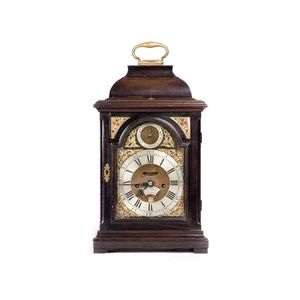French Wooden Mantle Clock with Pendulum
You must be a subscriber, and be logged in to view price and dealer details.
Subscribe Now to view actual auction price for this item
When you subscribe, you have the option of setting the currency in which to display prices to $Au, $US, $NZ or Stg.
- Pendulum - The pendulum was discovered around 1602 by Galileo Galilei, and was adopted for time keeping by the Dutch mathematician and natural philosopher, Christiaan Huygens, who excelled in astronomy, physics, and horology.
The pendulum comprises a metal rod usually of brass or steel with a metal disk, known as a bob, at the end. The movement of the pendulum is driven by weights or a spring, and as a pendulum swings in a regular arc, it was found accuracy could be controlled to within a few seconds a week.
Timekeeping can be adjusted by changing the height of the bob on the rod, making the pendulum either swing slower or faster.
The disadvantage of the pendulum was that changes in temperature also changed the length of the pendulum, interfering with the accuracy of the clock, and so in the 18th century two types of mercurial pendulums were invented which countered the movement in the steel rod.
The pendulum was the world's most accurate timekeeping technology until the invention of the quartz clock, regulated by a quartz crystal, in 1927.
This item has been included into following indexes:
Visually similar items

A 19th century walnut and oak cased single fusee bracket clock, signed Richard Hughes, Carnarvon, the silvered Roman numeral chapter ring with arcaded seconds and subsidiary date dial, on an engraved brass background with applied Arabesque ornamentation, (

Empire style French ormolu & porcelain mantel clock. Floral decoration with porcelain inserts. Dial & clock movement stamped Raingo Freres, Paris. Appears operational, with key & pendulum. on gilded wooden base. H

A black lacquered bracket clock, English, 18th century, with a strike and silent dial escapement to the centre of the dial and calendar aperture to the base, brass dial marker 'Ferdinand Vigne, London', 44 cm high, 25 cm wide and 18 cm deep

Late 19th century mantle clock, with a white enamel dial, with Roman numerals, set within a architectural black slate case, above a sphinx, height 39 cm
